Stances are fundamental to the practice of Shaolin Kung Fu. They are usually the first thing learned, but it usually takes a student a long time to realize how important they are. On the first day of learning every new student is usually taught the basic stances such as: Horse Stance, Forward Stance, and Cat Stance. And usually during his first lesson, the student can't wait to get to the good stuff. They want to learn the fancy movements, the high kicks, or the devastating fighting techniques.
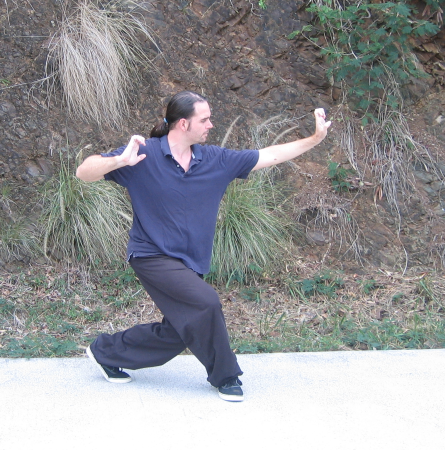
Franklin Fick - Ng Ga Kuen (Southern Shaolin) - Dragon Acting
It isn't until the student has trained for a long time that they fully appreciate the importance of stances in Shaolin Kung Fu. The stances seems so basic, in fact it's taught in the first lesson, but it is the fundamental aspect of training that determines whether the practitioner has developed real skill.
Usually when a novice sees a performance of Shaolin Kung Fu they look at the hand motions. When an experienced practitioner views a performance, they notice the stances and bodywork (Shen Fa) because these are the things that drive the hand motions giving them power and effectiveness.
The Basic Stances of Shaolin Kung Fu
There are really only a handful of basic stances in Shaolin Kung Fu.
The 5 Basic Stances of Shaolin Kung Fu
- Horse Stance
- Forward Stance
- Cat Stance
- Twist Stance
- Crane Stance
All other stances used in Shaolin Kung Fu are basically just variations of these 5 basic stances. I have listed the most common names for these 5 basic stances. The names for the stances might vary because some styles of Shaolin Kung Fu use different names for the same stance. For example, the Forward Stance is also sometimes called the Bow Stance, the Bow and Arrow Stance, the Mountain Climbing Stance, and many other names.
The stances are important because they allow the practitioner to use the body effectively. All movement is basically just shifting or stepping through different stances. The stances provide a solid base for the body and hand techniques. Without proper stances the practitioner will never be able to coordinate the different parts of the body together or more effectively using the ground for power.
Horse Stance

Franklin Fick - Northern Shaolin - Horse Stance
When you learn Kung Fu, the Horse Stance is probably going to be the first stance that you are going to learn. The reason is because it is fairly simple to get into this stance. You stand with your feet wider then shoulder width apart, with the feet parallel, and then you bend your knees and sit your body down.
Many styles use this stance as part of their basic training. Students sit in this stance while practicing their basic hand techniques. This serves several purposes. First the stance will greatly strengthen the legs. And, it will teach the student how to relax down into their stance so that their center of gravity is lowered and the chest is not pushed outward. This is important because all power in kung fu comes from the ground, which is why the stances are so important.
Forward Stance
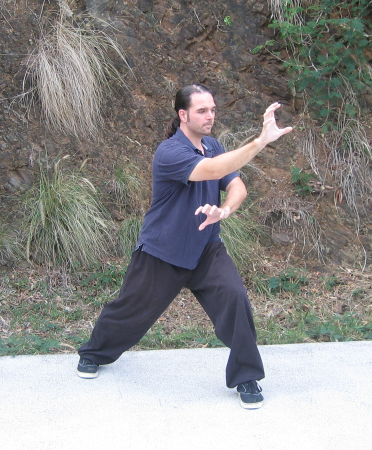
Franklin Fick - Southern Shaolin - Forward Stance
The forward stance is a very important stance in Shaolin Kung Fu. This basic stance is great for moving the body forward and it forms a very stable base for generating power and further forward movement.
The weight is on the front leg. The front knee is bent and the back leg is straight. From the side the stance resembles a drawn bow and that is why sometimes it is also called the bow stance or the bow and arrow stance.
Cat Stance
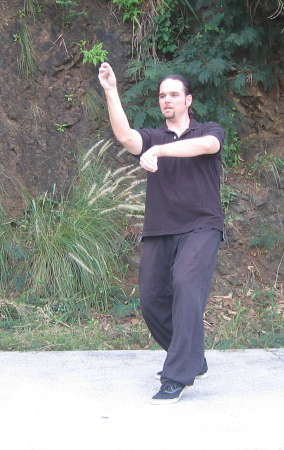
Franklin Fick - Southern Shaolin - Cat Stance
This stance is used for transitional movements and mobility. All the weight is on the back leg. The front leg rests on the toe or the ball of the foot. The front foot resembles the way a cat will put its paw out to take a step, with no weight on it, and this is how we get the name. The front leg can be used to step into another stance or it can be used to kick the opponent.
Twist Stance
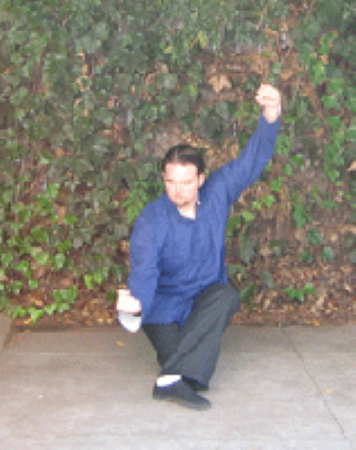
Franklin Fick - Northern Shaolin - Twist Stance
This is also another transitional stance. It gets its name because the legs appear twisted. The front foot is turned outward and the back foot rests on the ball of the foot. the stance can either be crouched down like in the picture above or higher.
This stance is used to advance or retreat, to change the position of the body, or you can untwist to change directions. This stance also contains a hidden kick and chin-na (joint locking) application.
Crane Stance
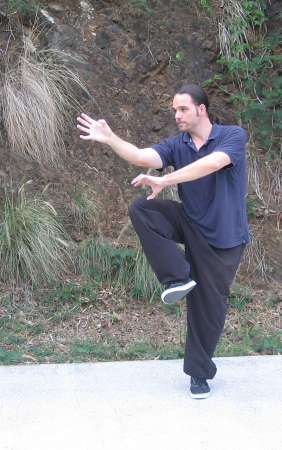
Franklin Fick - Southern Shaolin - Crane Stance
The crane stance imitates the way a crane stands on one leg. It develops balance and coordination. You stand on one leg and raise the other leg.
This stance can be used to kick the opponent or to evade attacks.
Those are the 5 Basic stances of Sholin Kung Fu. This is just a brief overview. As you advance through your training you will discover more and more about the stances, why they are so important and how you can use them.
So if you're taking your first lesson, make sure to pay attention to the stances. Don't neglect them. If you are an experienced practitioner, you can still benefit by bringing mindfulness into what your body, your footwork, and your stances are doing. There is always room for improvement. Learn 6 Tips to Improve Your Kung Fu Stances






